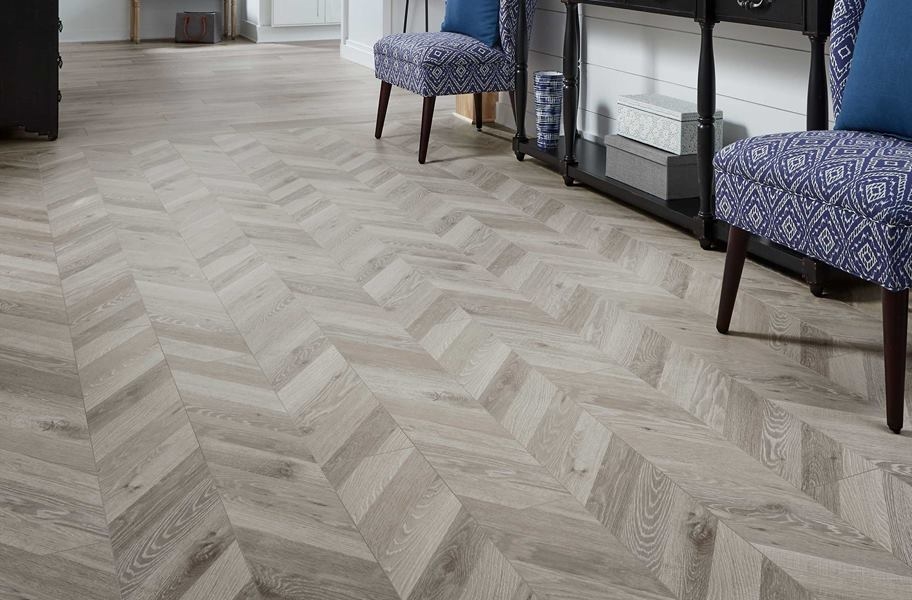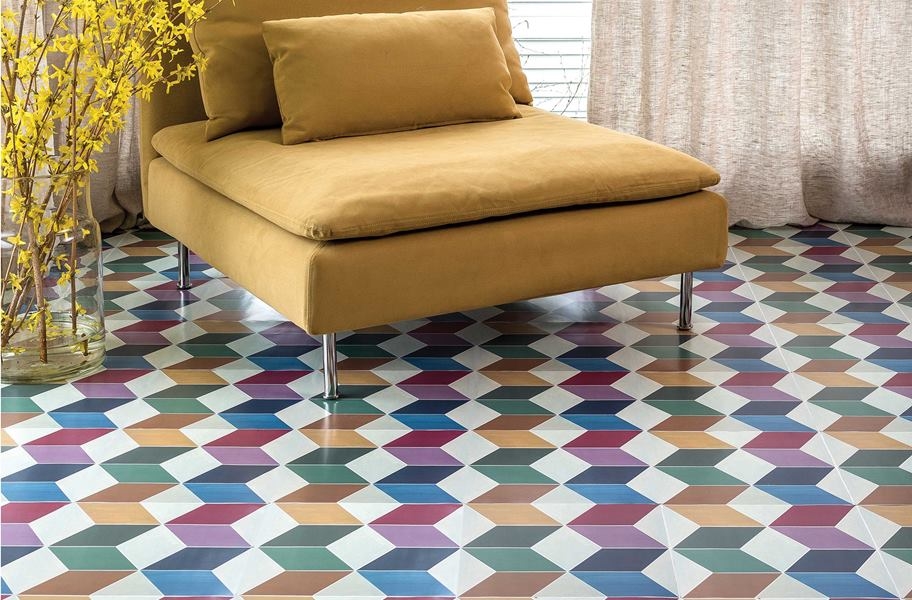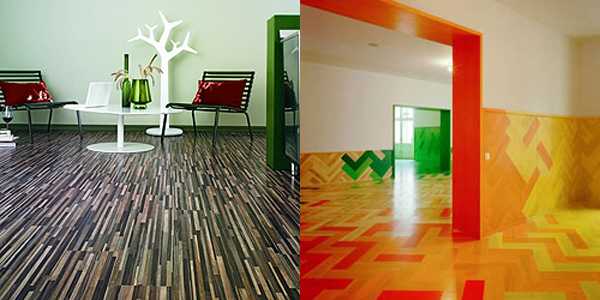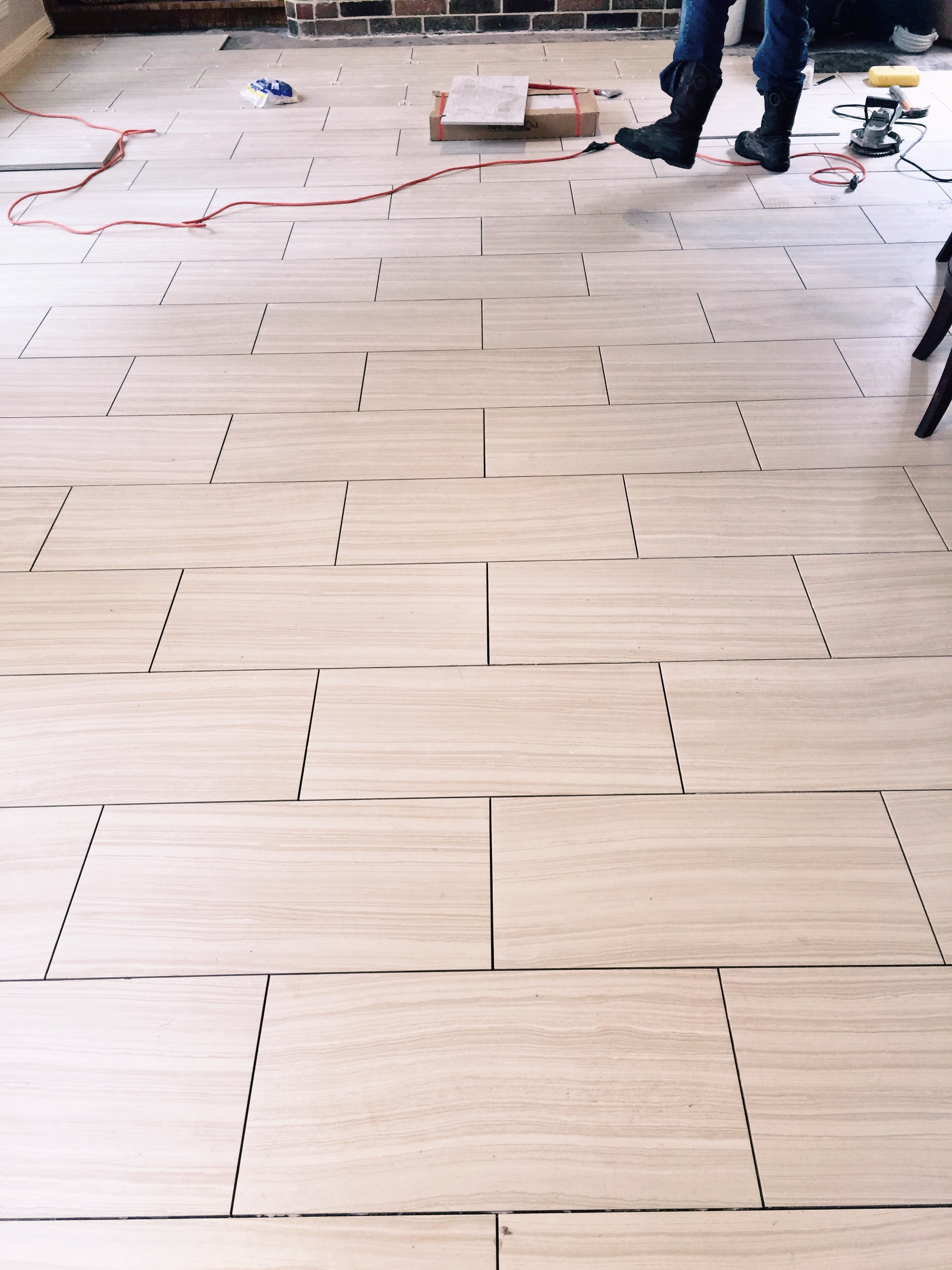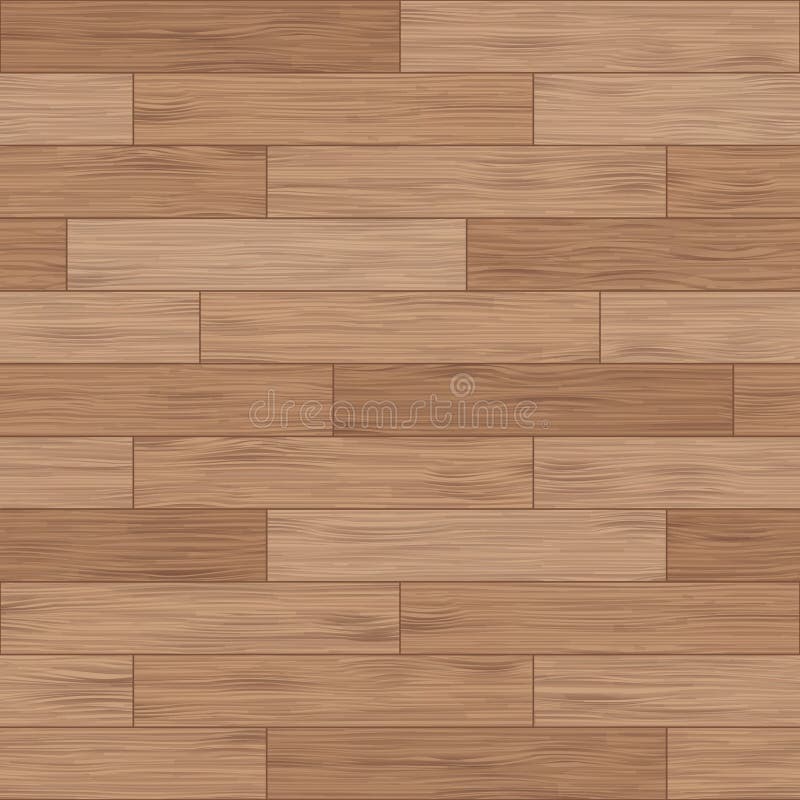Classic Patterns: The Timeless Appeal of Herringbone and Chevron
When it comes to flooring that stands the test of time, herringbone and chevron patterns are at the top of the list. These patterns have been used for centuries, and with good reason—they’re not only stylish but also versatile enough to fit into almost any home décor. If you’re thinking about going with laminate flooring, here’s why herringbone and chevron should be on your radar.
Herringbone: A Dynamic Classic
-
- The herringbone pattern is instantly recognizable. Its zigzag design adds a sense of movement to your floor, making any room feel more dynamic and lively.
- One of the best things about herringbone is how it can make a small room feel bigger. The pattern draws the eye, giving the illusion of more space.
- I’ve seen herringbone used in everything from cozy living rooms to sprawling hallways, and it always manages to make a statement without being over the top.
Chevron: A Polished Look
-
- Chevron is similar to herringbone but with a twist. Instead of staggered edges, the chevron’s planks meet at perfect angles, creating a clean, V-shaped pattern.
- This pattern gives a room a more polished, geometric feel. It’s a bit more modern and refined, perfect if you’re going for a sophisticated look.
- Chevron is great for adding visual interest to larger spaces without overwhelming the design. It works well in contemporary settings, especially when paired with sleek, minimalist furniture.
Versatility in Design
-
- Both herringbone and chevron work well with a variety of colors and finishes. Whether you prefer light, airy tones or rich, dark hues, these patterns can adapt to your style.
- You can also choose between a subtle, understated look or something more dramatic by playing with plank width and color contrast.
Historical Appeal
-
- These patterns have a rich history, often seen in European manors and palaces. Bringing them into your home adds a touch of old-world charm.
- The timelessness of herringbone and chevron means they won’t go out of style, making them a smart long-term investment for your flooring.
Installation Considerations
-
- While these patterns are stunning, they do require more precision during installation compared to a straightforward plank layout.
- It’s worth considering hiring a professional to ensure that the pattern is perfectly aligned, especially if you’re going for a high-end look.

Modern Elegance: Exploring Diagonal and Parquet Layouts
If you’re after something a bit more unique but still want to keep that elegant vibe, diagonal and parquet layouts could be the perfect fit for your laminate flooring. These patterns offer a fresh take on traditional designs and can elevate the look of any room.
Diagonal Layout: A Fresh Perspective
-
- The diagonal layout is a simple twist on the standard straight plank installation, but it makes a huge difference in how a room feels.
- Laying your laminate tiles at a 45-degree angle can make a small room feel larger and more open.
- I’ve always loved how diagonal layouts create a sense of flow in a space, guiding the eye from one corner to the next. It’s a subtle yet effective way to add interest without being too flashy.
Parquet Patterns: Intricate and Eye-Catching
-
- Parquet patterns involve small planks arranged in intricate designs, like the basket weave or brickwork. It’s a bit more complex than your average flooring, but the result is stunning.
- This layout is perfect for adding a touch of sophistication to any room, especially in formal areas like dining rooms or home offices.
- Parquet patterns can range from simple to elaborate, so you can choose one that matches your style, whether you prefer something understated or want to go all out with an elaborate design.
Playing with Color and Texture
-
- Both diagonal and parquet layouts offer opportunities to play with different colors and textures of laminate. Mixing light and dark tones or incorporating distressed finishes can create a more dynamic, layered look.
- You can also use these patterns to highlight certain areas of a room, like a seating area or a fireplace, drawing attention to specific features of your home.
Modern Yet Timeless
-
- What I love about diagonal and parquet layouts is that they feel modern but still have a timeless appeal. They can fit into contemporary spaces as easily as they can in more traditional homes.
- These patterns are great if you’re looking to add a touch of luxury to your flooring without going overboard.
Installation Complexity
-
- Like herringbone and chevron, diagonal and parquet layouts require a bit more expertise to install correctly. The precise cuts and alignment needed for parquet can be challenging, so it’s often worth bringing in a pro.
- However, the extra effort is well worth it for the stunning results these patterns can deliver.
Mixing It Up: Combining Colors and Textures for a Unique Look
Why stick to one color or texture when you can have the best of both worlds? Mixing colors and textures in your laminate flooring is a fantastic way to create a truly unique and personalized look for your home. Here’s how you can pull off this trend.
Two-Tone Flooring: Adding Depth and Dimension
-
- Combining two different colors of laminate in a single room can add depth and interest. For example, you could use a lighter tone in the center of the room and a darker tone around the edges, creating a border effect.
- I’ve seen two-tone flooring used to great effect in open-plan spaces where the change in color helps define different areas without needing walls or dividers.
Textural Contrast: Mixing Smooth and Distressed Finishes
-
- Another way to mix things up is by combining different textures. Pairing smooth, polished planks with distressed, rustic ones can create a visually interesting contrast.
- This approach works particularly well in spaces where you want a blend of modern and vintage vibes. It’s a great way to add character to a room.
Pattern and Color Combinations
-
- You can also mix and match patterns with different colors. For instance, you could use a herringbone pattern in one shade and a diagonal pattern in another, creating a patchwork effect.
- This method is perfect for those who love a more eclectic style and aren’t afraid to experiment with their décor.
Highlighting Features with Mixed Finishes
-
- Use different colors and textures to highlight specific areas of a room. For example, you could use a different color laminate around a fireplace or in a hallway to draw attention to those areas.
- Mixing finishes can also help transition from one room to another, creating a cohesive yet varied look throughout your home.
Installation Considerations
-
- Mixing colors and textures requires careful planning to ensure that the final look isn’t too chaotic. It’s important to have a clear vision of the result and to make sure the different elements complement each other.
- You might want to lay out the planks beforehand to see how they look together or even create a small sample area before committing to the entire floor.
Room by Room: Best Tile Patterns for Different Spaces
Not all rooms are created equal, and neither are their flooring needs. Different spaces call for different tile patterns to make the most of their size, lighting, and purpose. Here’s a guide to choosing the best laminate tile patterns for each room in your home.
Living Room: Make a Statement
-
- The living room is often the heart of the home, so it’s the perfect place to make a statement with your flooring. Patterns like herringbone or chevron work wonderfully here, adding a touch of elegance and visual interest.
- If your living room is on the smaller side, consider a diagonal layout to create the illusion of more space. It’s a subtle way to enhance the room without overpowering it.
Kitchen: Practical and Stylish
-
- In the kitchen, durability is key, but that doesn’t mean you have to sacrifice style. A simple straight or diagonal pattern is usually the best choice here, as it’s easy to maintain and works well with the room’s functional layout.
- If you’re feeling adventurous, you could opt for a checkerboard pattern in two contrasting colors. It’s a classic look that adds a bit of retro charm.
Bedroom: Cozy and Inviting
-
- For the bedroom, you want a pattern that feels cozy and inviting. A wide plank layout in a warm, natural wood tone can create a calm, restful atmosphere.
- If you’re after something a bit more decorative, a parquet pattern can add a touch of sophistication without making the space feel too busy.
Bathroom: Go Bold or Keep It Simple
-
- Bathrooms are a great place to experiment with bolder patterns, especially if you have a small space. A chevron or herringbone pattern in a light color can make the room feel larger and more open.
- Alternatively, a simple, straight plank pattern in a water-resistant laminate is always a safe and stylish choice for bathrooms.
Hallways and Entryways: Durable and Dynamic
-
- These high-traffic areas need a durable flooring pattern that can stand up to daily wear and tear. Herringbone is a great option here, as its zigzag pattern is both stylish and practical, helping to mask dirt and scuffs.
- A diagonal or parquet layout can also add a dynamic touch to these often overlooked spaces, making your home feel more cohesive right from the entrance.
DIY or Hire a Pro? Tips for Laying Laminate Tiles Perfectly
Deciding whether to tackle your laminate flooring project yourself or hire a professional is a big decision. Both options have their pros and cons, and what’s right for you will depend on your skills, budget, and the complexity of the pattern you choose. Here’s what you need to consider.
DIY: The Satisfaction of Doing It Yourself
-
- There’s something incredibly satisfying about completing a home improvement project yourself. If you’re handy and enjoy working with your hands, laying laminate tiles can be a rewarding challenge.
- DIYing your flooring can also save you a significant amount of money, especially if you’re working with a tight budget. With the right tools and a bit of patience, many people find that they can achieve professional-looking results on their own.
When DIY Works Best
-
- Simple patterns, like straight planks or diagonal layouts, are usually more DIY-friendly. These patterns require fewer precise cuts and less complicated measurements, making them easier for beginners to tackle.
- If you have a relatively small space to cover and don’t need to work around a lot of obstacles like doorways or stairs, DIY is definitely worth considering.
Hiring a Pro: When It’s Worth the Investment
-
- On the other hand, if you’re dealing with a more complex pattern like herringbone, chevron, or parquet, hiring a professional can be well worth the investment. These patterns require precise cuts and alignment, and any mistakes can be costly to fix.
- Professionals also have the experience and tools to deal with tricky areas, like uneven subfloors or tight corners. They can ensure that your floor is laid perfectly, with no gaps or misaligned tiles.
Factors to Consider
-
- Before making your decision, think about your timeline and budget. DIYing your flooring will take more time, especially if you’re learning as you go, but it can save you money. Hiring a pro will get the job done faster but at a higher cost.
- Also, consider your confidence level. If the idea of cutting and laying tiles makes you nervous, it might be better to leave it to the experts.
DIY Tips for Success
-
- If you do decide to go the DIY route, make sure you’re well-prepared. Watch tutorial videos, read up on the best practices, and don’t rush the process.
- It’s also important to have the right tools, like a quality tile cutter and a level. Taking your time to measure and plan will pay off in the end with a floor you can be proud of.
Maintaining the Look: Care Tips for Long-Lasting Laminate Flooring
Once you’ve got your beautiful new laminate flooring installed, you’ll want to keep it looking its best for as long as possible. Fortunately, laminate is pretty low-maintenance compared to other flooring options, but it still needs a bit of care to stay in top shape. Here’s how to keep your laminate looking fresh and fabulous.
Regular Sweeping and Vacuuming
-
- The first step in maintaining your laminate floor is regular sweeping or vacuuming to remove dust and dirt. These particles can act like sandpaper on your floor, dulling the finish over time.
- I recommend using a soft-bristle broom or a vacuum with a hardwood floor attachment to avoid scratching the surface. A quick sweep every few days will keep your floors looking clean and shiny.
Damp Mopping for a Deeper Clean
-
- For a deeper clean, you can damp mop your laminate floor. The key here is to use as little water as possible—laminate doesn’t like to be soaked.
- Use a microfiber mop and a cleaning solution specifically designed for laminate floors. Avoid harsh chemicals and be sure to wring out your mop well before using it.
Dealing with Spills and Stains
-
- Accidents happen, but it’s important to clean up spills as quickly as possible to prevent damage. Laminate is water-resistant, but if liquid sits on it for too long, it can seep into the seams and cause the planks to swell.
- For stubborn stains, a mixture of water and vinegar or a gentle laminate cleaner should do the trick. Just be sure to test any cleaner in an inconspicuous area first to make sure it doesn’t damage the finish.
Protecting Your Floors from Furniture and Pets
-
- To keep your laminate looking its best, use felt pads under the legs of furniture to prevent scratches when moving them around.
- If you have pets, make sure to keep their nails trimmed to avoid accidental gouges on the floor. Area rugs in high-traffic areas can also help protect your laminate from wear and tear.
Avoiding Common Mistakes
-
- One of the biggest mistakes people make with laminate flooring is using too much water or steam to clean it. Steam mops can cause the laminate to warp, so it’s best to avoid them altogether.
- Also, never use abrasive cleaners or scouring pads, as these can scratch and dull the surface of your laminate.
Fabulous Laminate Floors Adding New Patterns and Colors
Easy Installation Patterns
Which Direction Should You Run Your Tile Flooring?
Easy Installation Patterns
Floor Wood Parquet. Flooring Wooden Seamless Pattern
Patterned Laminate Tile Flooring Mosaic Laminate Direct Flooring
Livelynine 32-Pack Grey and White Flooring Peel and Stick Floor Tile Waterproof Marble Vinyl Floor Tiles Bathroom Kitchen Living Room Bedroom Laminate
Related Posts:
